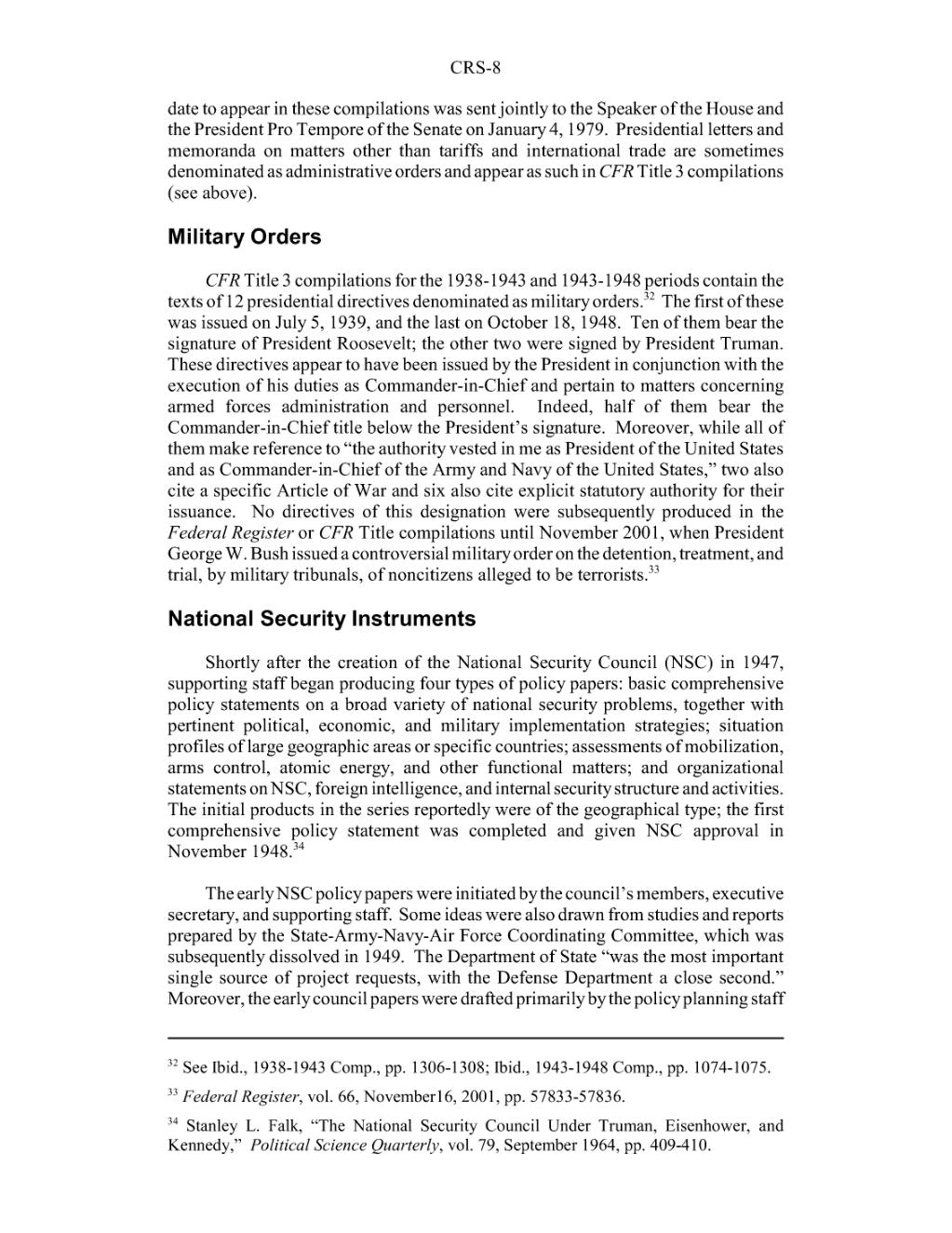CRS-8
date to appear in these compilations was sent jointly to the Speaker of the House and the President Pro Tempore of the Senate on January 4, 1979. Presidential letters and memoranda on matters other than tariffs and international trade are sometimes denominated as administrative orders and appear as such in CFR Title 3 compilations (see above).
Military Orders
National Security Instruments
Shortly after the creation of the National Security Council (NSC) in 1947, supporting staff began producing four types of policy papers: basic comprehensive policy statements on a broad variety of national security problems, together with pertinent political, economic, and military implementation strategies; situation profiles of large geographic areas or specific countries; assessments of mobilization, arms control, atomic energy, and other functional matters; and organizational statements on NSC, foreign intelligence, and internal security structure and activities. The initial products in the series reportedly were of the geographical type; the first comprehensive policy statement was completed and given NSC approval in November 1948.[3]
The early NSC policy papers were initiated by the council's members, executive secretary, and supporting staff. Some ideas were also drawn from studies and reports prepared by the State-Army-Navy-Air Force Coordinating Committee, which was subsequently dissolved in 1949. The Department of State “was the most important single source of project requests, with the Defense Department a close second.” Moreover, the early council papers were drafted primarily by the policy planning staff- ↑ See Ibid., 1938-1943 Comp., pp. 1306-1308; Ibid., 1943-1948 Comp., pp. 1074-1075.
- ↑ Federal Register, vol. 66, November 16, 2001, pp. 57833-57836.
- ↑ Stanley L. Falk, “The National Security Council Under Truman, Eisenhower, and Kennedy,” Political Science Quarterly, vol. 79, September 1964, pp. 409-410.
